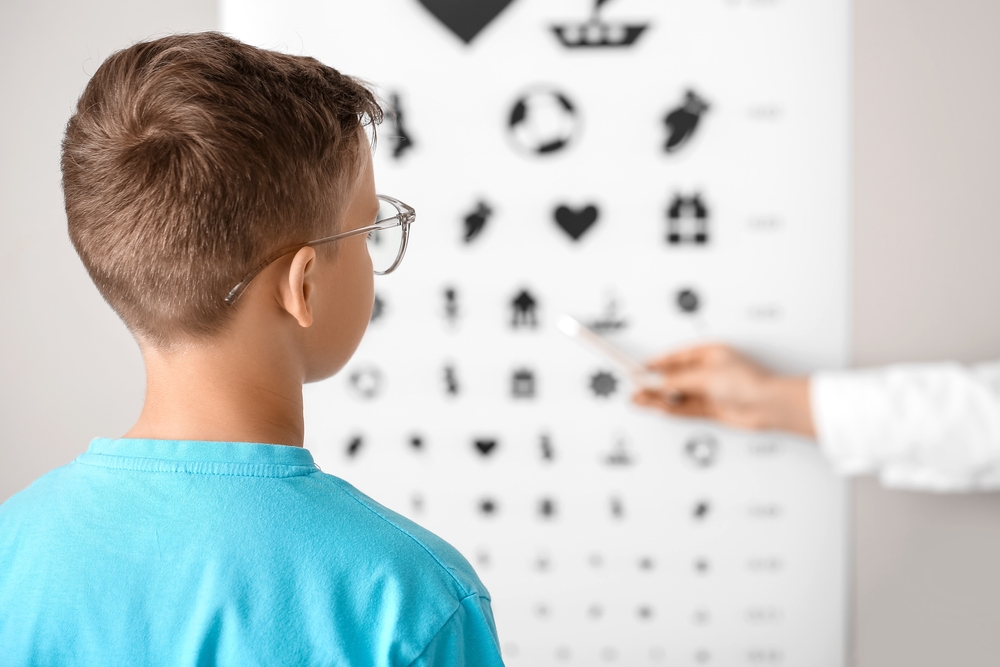
Myopia, also known as nearsightedness, is more than just a refractive error that makes distant objects appear blurry - it’s a growing global concern with long-term implications for eye health. As more children are being diagnosed with myopia at younger ages, it’s crucial for parents to understand the risks associated with this condition and the benefits of proactive treatment.
What Is Myopia?
Myopia occurs when the eye grows too long from front to back, causing light to focus in front of the retina instead of directly on it. This leads to blurred distance vision. While glasses and standard contact lenses can compensate for blurry vision, they do not slow the progression of the condition.
Unchecked myopia can also significantly impact a child's learning and development. Clear vision is crucial for classroom activities such as reading the board, participating in sports, and engaging with peers. Children with uncorrected or worsening myopia may struggle academically, experience lower self-esteem, and miss important developmental milestones.
Long-Term Risks of Untreated Myopia
High myopia significantly increases the risk of developing serious eye diseases later in life, including:
• Retinal detachment: As the eye elongates, the retina becomes thinner and more prone to tearing or detaching.
• Glaucoma: Myopia can increase the likelihood of developing glaucoma, a condition that damages the optic nerve and can lead to permanent vision loss.
• Cataracts: People with high myopia are at a greater risk of developing cataracts at a younger age.
• Myopic maculopathy: This degenerative condition affects the central part of the retina and can lead to irreversible vision loss.
These risks highlight why myopia isn’t just a matter of needing stronger glasses, it’s a chronic condition that requires careful management.
Why Early Treatment Matters
The earlier myopia begins, the more likely it is to progress rapidly and reach high levels in adulthood. Early intervention is critical, as it can slow the progression and significantly reduce the risk of future eye health complications. Addressing myopia early helps protect your child’s long-term vision and overall eye health.
Treatments
At Factoria Eye Clinic, we offer myopia management solutions that are tailored to each child’s unique needs.
Atropine
One option is atropine eye drops, a low-dose medication that has been shown to slow the eye's growth and reduce the rate of myopia progression in children.
Orthokeratology
Another effective method is orthokeratology (Ortho-K), which uses specially designed overnight lenses to gently reshape the cornea while your child sleeps. This not only provides clear daytime vision without glasses or contacts but also helps control the elongation of the eye.
Myopia controlling specialty soft contact lenses
Additionally, we offer soft dual focus contact lenses, daily disposable lenses that use peripheral defocus technology to manage eye growth while correcting vision.
Eyeglass Lenses
New FDA Approval: Stellest Lenses Now Available in the U.S.
On September 25, 2025, the FDA approved Stellest eyeglass lenses for children ages 6-12 - a major milestone for myopia management in the United States.
Previously available internationally since 2020, these lenses have been used successfully across Europe, Canada, and Asia to slow myopia progression. Stellest lenses feature a clear central zone surrounded by rings of controlled blur, creating peripheral light defocus that helps reduce the eye’s elongation over time.
Our comprehensive myopia management treatment includes regular monitoring, customized treatment plans, and ongoing education. We are committed to partnering with families to ensure the best possible outcomes, helping to protect your child's vision both now and in the future.
As a parent you may be wondering how to make a decision about what type of myopia control is right for your child. Here some the things you may want to consider:
• Tailored recommendations: An optometrist who specializes in myopia control should be able to discuss with you the various myopia control options and give feedback based upon your child’s unique situation which one(s) would suit them best
• Ongoing monitoring: This specialist should also be monitoring you child regularly (usually at least every 6 months) to determine if the myopia control method(s) that are chosen are working as intended. This usually includes measuring axial length (eyeball length)
• Consistency matters: With any myopia control option, consistent use is key. Stellest lenses, for example, need to be worn at least 12 hours a day to achieve maximum effect.
Take Action Today
Myopia is a progressive condition that can lead to serious, lifelong eye health issues if left unmanaged. Fortunately, early intervention and effective myopia management can make a lasting difference. By taking proactive steps now, you can help protect your child’s vision and support their long-term eye health.
If you’re concerned about your child’s vision or have noticed signs of nearsightedness, schedule a pediatric eye exam at Factoria Eye Clinic for a customized myopia management plan. Visit our office in Bellevue, Washington, or call (425) 641-2020 to book an appointment today.






